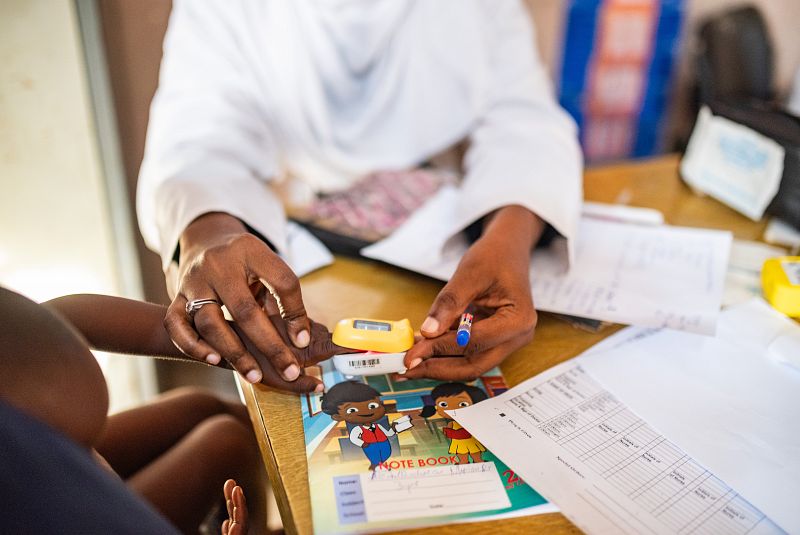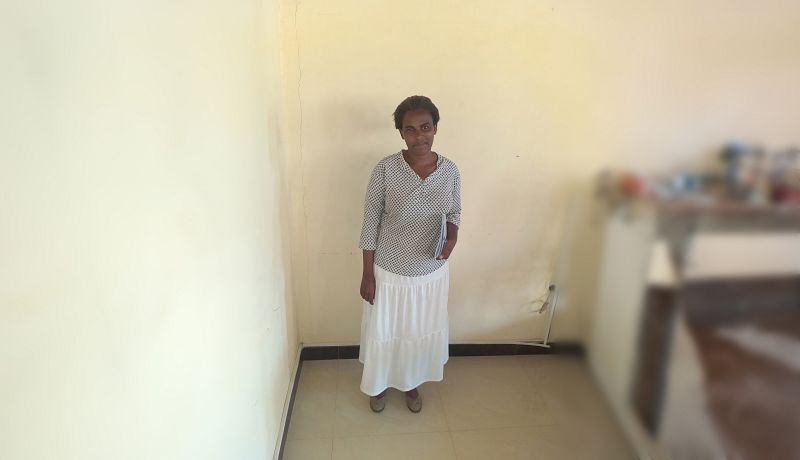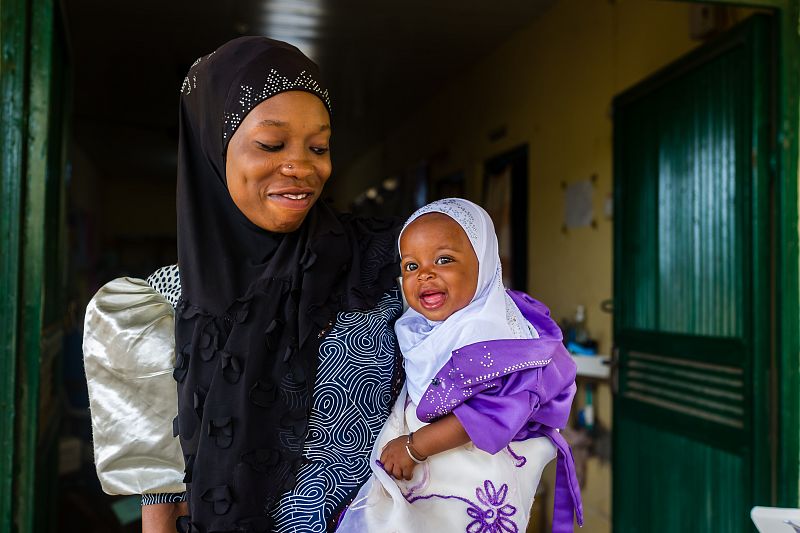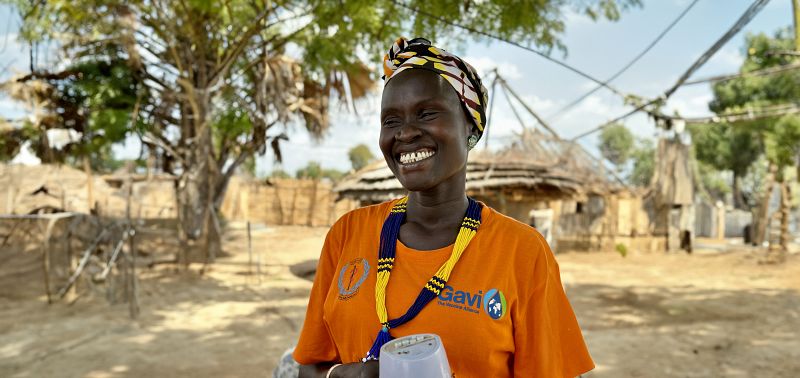Publications
Explore our publications to find useful evidence, lessons and recommendations from our work across Africa and Asia
Type
- Advocacy and positioning
- Advocacy briefs
- Advocacy reports
- Annual reviews
- Brochures
- Capacity statements
- Position statements
- Conference
- Briefing notes
- Posters
- Presentations
- Guidance and toolkits
- Guidance
- Training materials
- Learning
- Case studies
- Infographics
- Insight briefs
- Learning briefs
- Learning papers
- Newsletters
- Research and Technical
- Journal articles
- Project briefs
- Project reports
- Research briefs
- Synopses
- Technical briefs
Keyword
- ASTMH
- Advocacy
- COVID-19
- Capacity development
- Case management
- Case study
- Chemoprevention
- Child survival
- Climate
- Community delivery
- Costing and economic impact evaluation
- Data-informed decision-making
- Diagnosis
- Digital health
- Elimination
- Evidence generation
- Gender
- Genetic modification
- Health financing
- Health system strengthening
- Learning
- Logistics
- MNCH
- Malaria in pregnancy
- Monitoring and evaluation
- PMC
- Philanthropy
- Policy development
- Private sector
- Quality improvement
- Research
- Resistance management
- SBC
- SDGs
- SMC
- Scaled implementation
- Scholarships
- Surveillance
- Treatment
- Universal health coverage
- Urbanisation
- Vaccines
- Vector control
- Webinars
- iCCM
Diseases
Country
Language
Reset all search optionsCurrent search filters (12 results match ALL terms):
Project 93
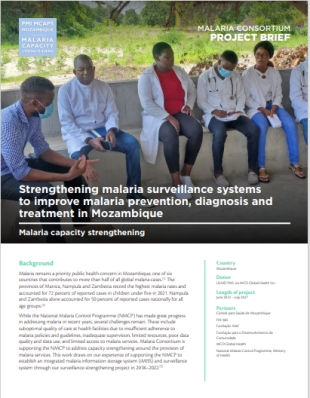 01/06/2023
Project brief
01/06/2023
Project brief
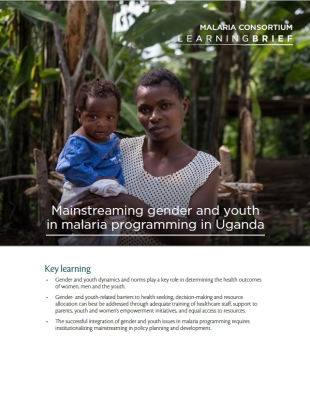 30/10/2020
Learning brief
30/10/2020
Learning brief
 22/05/2020
Case study
22/05/2020
Case study
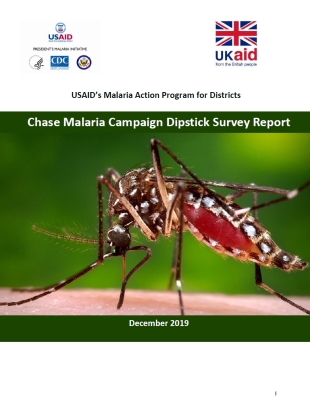 20/12/2019
Project report
20/12/2019
Project report
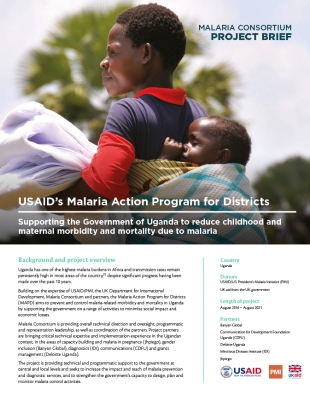 04/02/2019
Project brief
04/02/2019
Project brief
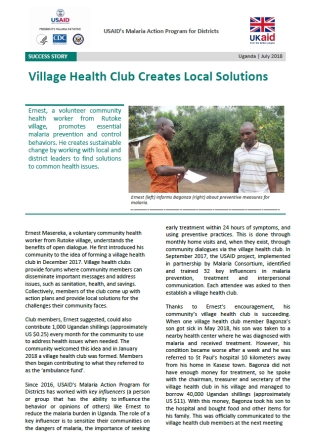 23/07/2018
Case study
23/07/2018
Case study
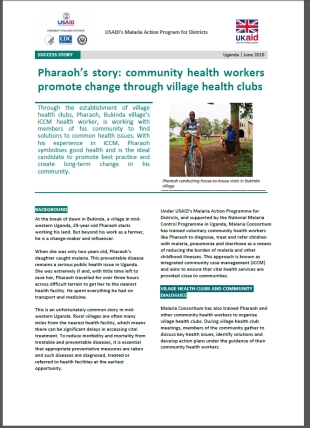 14/06/2018
Case study
14/06/2018
Case study
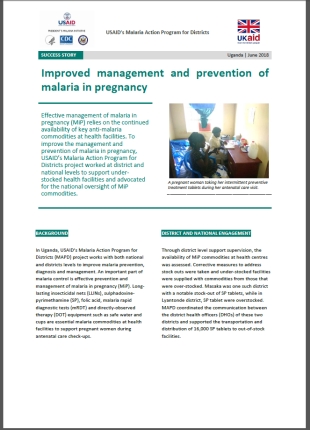 14/06/2018
Case study
14/06/2018
Case study
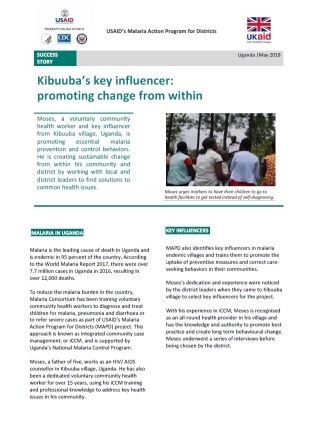 02/05/2018
Case study
02/05/2018
Case study
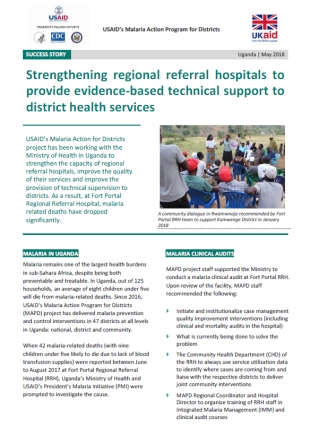 02/05/2018
Case study
02/05/2018
Case study
 20/11/2017
Insight brief
20/11/2017
Insight brief
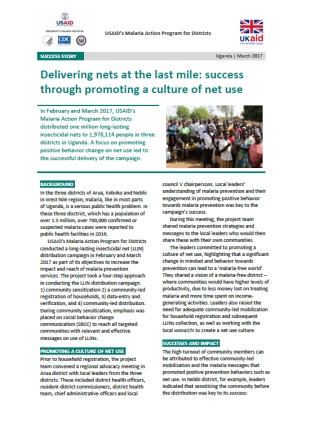 05/07/2017
Case study
05/07/2017
Case study
Project 93
Filtered by Project: Malaria Action Program for Districts
 01/06/2023
Project brief
01/06/2023
Project brief
Strengthening malaria surveillance systems to improve malaria prevention, diagnosis and treatment in Mozambique
The U.S. President’s Malaria Initiative Malaria Capacity Strengthening Program aims to improve the provision of quality malaria services to reduce morbidity and mortality. 01/06/2023The U.S. President’s Malaria Initiative Malaria Capacity Strengthening Program aims to improve the provision of quality malaria services to reduce morbidity and mortality.
 30/10/2020
Learning brief
30/10/2020
Learning brief
Mainstreaming gender and youth in malaria programming in Uganda
Malaria Consortium's USAID MAPD project explored the gender- and youth-related norms that might be hindering effective malaria control in Uganda. 30/10/2020Malaria Consortium's USAID MAPD project explored the gender- and youth-related norms that might be hindering effective malaria control in Uganda.
 22/05/2020
Case study
22/05/2020
Case study
Malaria prevention during challenging times of COVID-19
Fewer people are following malaria prevention activities and seeking malaria treatment during lockdown. 22/05/2020Fewer people are following malaria prevention activities and seeking malaria treatment during lockdown.
 20/12/2019
Project report
20/12/2019
Project report
MAPD Malaria SBCC Dipstick Report 2019
USAID’s Malaria Action Program for Districts assess the current knowledge, attitudes and practices of malaria prevention and control in five regions in Uganda. 20/12/2019USAID’s Malaria Action Program for Districts assess the current knowledge, attitudes and practices of malaria prevention and control in five regions in Uganda.
 04/02/2019
Project brief
04/02/2019
Project brief
Supporting government to control malaria in Uganda
The USAID’s Malaria Action Program for Districts aims to strengthen the government’s capacity to design, plan and monitor malaria control activities. 04/02/2019The USAID’s Malaria Action Program for Districts aims to strengthen the government’s capacity to design, plan and monitor malaria control activities.
 23/07/2018
Case study
23/07/2018
Case study
Village health club creates local solutions
Since 2016, USAID’s Malaria Action Program for Districts (MAPD) has been working with key influencers to reduce the malaria burden in Uganda. One of them is Ernest, a volunteer community… 23/07/2018Since 2016, USAID’s Malaria Action Program for Districts (MAPD) has been working with key influencers to reduce the malaria burden in Uganda. One of them is Ernest, a volunteer community health worker from Rutoke village who is promoting essential malaria…
 14/06/2018
Case study
14/06/2018
Case study
Pharaoh's story: Community health workers promote change through village health clubs
Pharaoh, Bukinda village’s integrated community case management (iCCM) health worker, is working with members of his community to find solutions to common health issues through the establishment of village health… 14/06/2018Pharaoh, Bukinda village’s integrated community case management (iCCM) health worker, is working with members of his community to find solutions to common health issues through the establishment of village health clubs. With his experience in iCCM, Pharaoh symbolises good health…
 14/06/2018
Case study
14/06/2018
Case study
Improved management and prevention of malaria in pregnancy
Effective management of malaria in pregnancy (MiP) requires key antimalarial commodities to always be available at health facilities. To improve the management and prevention of MiP, USAID’s Malaria Action Program… 14/06/2018Effective management of malaria in pregnancy (MiP) requires key antimalarial commodities to always be available at health facilities. To improve the management and prevention of MiP, USAID’s Malaria Action Program for Districts (MAPD) project worked at district and national levels…
 02/05/2018
Case study
02/05/2018
Case study
Kibuuba’s key influencer: Promoting change from within
Moses, a voluntary community health worker and key influencer from Uganda's Kibuuba village, is promoting essential malaria prevention and control behaviours. By working with local and district leaders to find… 02/05/2018Moses, a voluntary community health worker and key influencer from Uganda's Kibuuba village, is promoting essential malaria prevention and control behaviours. By working with local and district leaders to find solutions to common health issues, he is creating sustainable change…
 02/05/2018
Case study
02/05/2018
Case study
Strengthening regional referral hospitals to provide evidence‐based technical support to district health services
USAID’s Malaria Action for Districts project has been working with the Ministry of Health in Uganda to strengthen the capacity of regional referral hospitals, improve the quality of their services… 02/05/2018USAID’s Malaria Action for Districts project has been working with the Ministry of Health in Uganda to strengthen the capacity of regional referral hospitals, improve the quality of their services and improve the provision of technical supervision to districts. As…
 20/11/2017
Insight brief
20/11/2017
Insight brief
